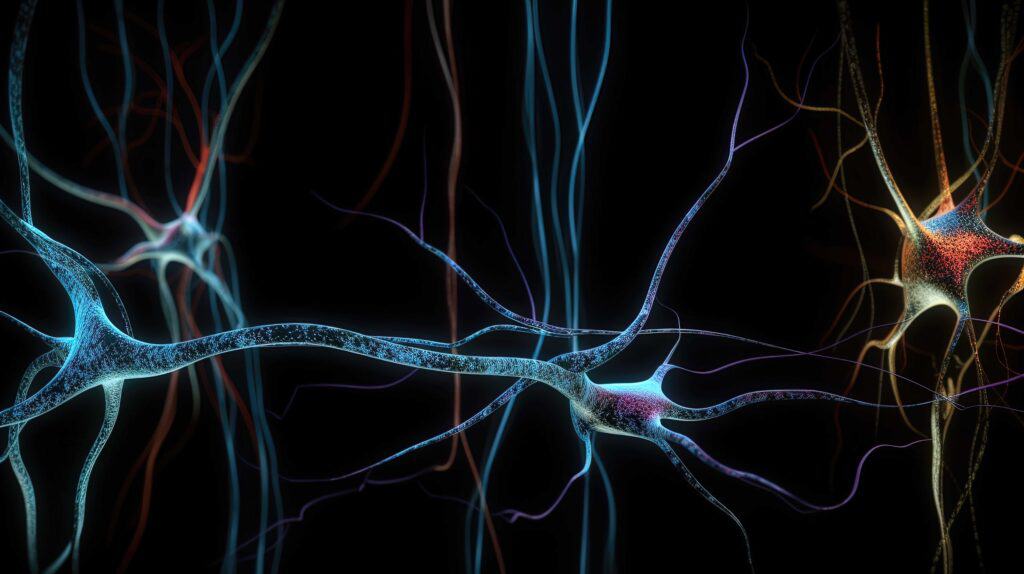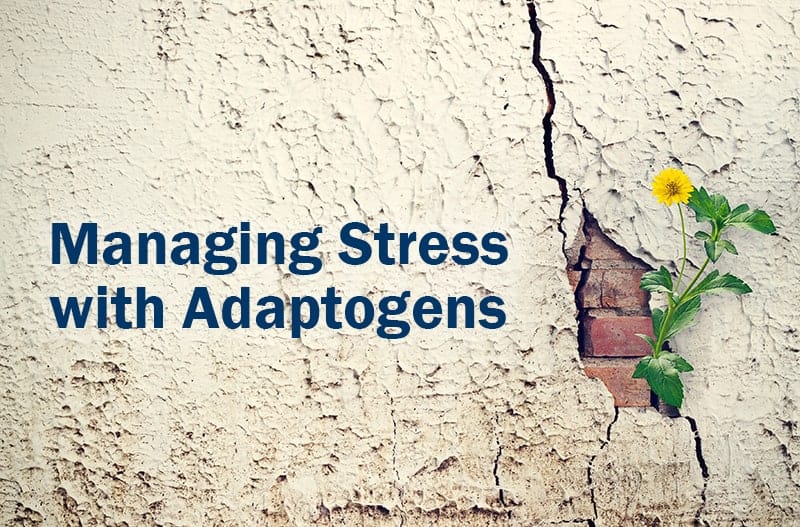Energetix | Emily Greene-Hartsfield, ND
Although it may seem surprising, current conveniences and abundant resources have not seemed to reduce stress. Instead, our experience of stress has merely morphed from sporadic incidents to an enduring, chronic presence. Work demands, personal commitments, and the constant stream of information have inextricably woven stress into the fabric of our daily life.
Fortunately, there are helpful and time-tested ways to build tolerance for stressors and mitigate the physical symptoms that accompany them.
Enter adaptogens— remarkable herbs that may be key to developing resilience, restoring balance, and increasing vitality amidst life’s chaos. Although they have been used continuously since ancient times, adaptogens have become increasingly popular recently as people look for natural ways to counter endemic stress.
To truly understand adaptogens and uncover their transformative potential, it is necessary to ask questions, delve into the science, and discover their impact on our physical, mental, and emotional well-being. Some things to consider:
- Can stress be beneficial?
- Why have adaptogens seen such a rise in popularity in recent years?
- Where to start with adaptogens?
Stress and Stressors- Helpful or Harmful?
Any substance or event that causes the body to shift from equilibrium (homeostasis) is considered a stressor. Whether the stressor is emotional, physical, real or imagined, there is a common physiological response which includes changes like catecholamine release and respiratory and cardiovascular variations. These changes happen without conscious thought and are part of the autonomic stress response orchestrated by the sympathetic nervous system (SNS).
The SNS triggers revisions to baseline physiology and initiates repair, strengthening, and immune-bolstering mechanisms.
Consequently, stress and a healthy stress response are necessary for achieving an individual’s potential for strength and health.

Hormetic Stress
These physiological responses are readily observed in the application of hormetic stress— low-level exposure to a stressor that produces beneficial adaptations. Hormetic stressors could include cold exposure, mild exposure to an allergen, or an intense workout.
Regular hormetic exposure can springboard adaptations that benefit health and increase tolerance to the stressor, often tempering the overall stress response.
Biological symptoms of stress
During a stressful episode, autonomic changes (physical, neurochemical, or immunological) alter the normal state, moving it from homeostasis. Increased heart rate and cardiac output drive oxygen and nutrients to the muscles and organs. An increase in blood pressure ensures the enriched blood arrives quickly. Muscles tense in preparation for action, utilizing their stores of ATP. The liver dumps glucose into the system for quick bursts of energy. These familiar symptoms are beneficial in the short term.
In the long term, however, the increased workload and demands on the body can lead to failure, disease, and dysfunction.
Unresolved stress leads to various challenges related to those short-term adjustments. The sympathetic nervous system, unchecked by the parasympathetic nervous system, can activate inflammation, create metabolic and emotional imbalances, depress the immune system, and leave the individual susceptible to disease and effects commonly associated with aging.
General Adaptation Syndrome (GAS)
Hans Selye, a Canadian endocrinologist and pioneer in stress research, noted early in his career a set of symptoms that seemed to accompany most illnesses. Not a part of the pathology of the illness, Selye and his mentors came to understand them simply as the symptoms of being unwell.
Years later, through his research in Endocrinology, Dr. Selye linked similar symptoms such as obesity, high blood pressure, weakness, muscle aches, lowered immunity, and peptic ulcers to the hypothalamic-pituitary-adrenal (HPA) axis and how the body experiences stress.
As a result of this research, Selye developed a theory to explain the stress response called GAS- General Adaptation Syndrome.
GAS occurs in three phases. The first is Alarm, commonly called “fight or flight” when the adrenals release cortisol and adrenaline. During this phase, the body prepares to do whatever might be necessary for survival.
The second is Resistance. Free from the immediacy of the stressor, biological systems begin to normalize and repair (seek homeostasis). The body retains a heightened awareness for a quicker response should circumstances change.
The third phase in the model is Exhaustion. In this phase, the body weakens and no longer has a reserve of resources to resist or adapt. Alarm has moved beyond the compensatory ability of the body, and the individual will likely require external intervention to repair and recover. This phase is often observed in chronically stressful situations such as prolonged illness, job anxiety, or financial woes.

For example, imagine you are in your car, and a distracted driver cuts you off, forcing you onto the shoulder, narrowly avoiding an accident.
Phase 1: Cortisol and adrenaline surge through you as your brain registers “Danger”. Your heart rate elevates. Your breathing increases to raise oxygen levels in your brain and muscles. Your lungs expand. Your metabolism shifts to glucose usage to utilize rapid energy. Your eyes dilate to help you see better. Your other senses heighten as you prepare to meet the challenge.
Phase 2: It was a near miss. You continue down the road, grumbling under your breath, aware that your senses seem sharper somehow. Your heart thuds against your chest, and you feel the adrenaline pouring through your system. You may feel antsy or irritable or have the need to pull over and do something physical to release the energy coursing through you.
Phase 3: This phase is not reached in the example, as the stressor is dealt with adequately and timely.
Within a few minutes, your body seeks homeostasis and a return to normal. Your breath and heart rate slow. The adrenaline dissipates; you regain your equilibrium. You remain slightly more alert as the strong reactions begin to recede. You may feel drained and tired.
Stress events happen regularly. Some you recognize, some pass by almost unnoticed. However, your parasympathetic nervous system has taken notice. In this example, each time you get behind the wheel of your car for the next few days or weeks, you are probably slightly more aware and alert. And each time something similar happens, your body is more ready to react, respond, and adapt.
Ways to Manage Stress
There are many different approaches to stress management. Deep breathing, meditation, and exercise are all useful ways to break a stress cycle. Vacations, hobbies, and social connections can provide distraction and an outlet to diffuse stress. Over the last several years, adaptogens have emerged as another valuable way to manage and adapt to stress.
What are Adaptogens?
Adaptogens are specific phytochemicals that help the body adapt to stress, support normal metabolic function, promote restful sleep, and restore balance. Benefits include increased energy levels, improved mental clarity, better focus, improved sleep quality, reduced inflammation, and more.
Adaptogens tend to have a non-specific and varied response to stressful stimuli and exhibit amphoteric capability, the ability to adjust up or down as needed. Adaptogens balance and re-regulate biological functions to achieve homeostasis.

Types of Adaptogens
While adaptogens have wide-ranging actions, certain ones are known to help in specific ways:
- Ashwagandha
- Tulsi (Holy Basil)
- Maca Root
- Panax Ginseng
- Cordyceps sinensis
- Gotu Kola
- Rhodiola rosea
- Licorice
- Turmeric
- Panax Ginseng
- Ashwagandha
- Astragalus
- Reishi
- Turkey Tail
- Chaga
- Eleuthero
- Ginkgo Biloba
- Schisandra Berry
- Maca
- Amla Berry
- Dong Quai
- Fo Ti
- Amla Berry
- Rhodiola rosea
How Adaptogens Work
The multifaceted actions of adaptogens offer insights into their influence on stress and cognitive function.
Adaptogens are associated with returning to homeostasis (Phase 2 of the GAS) via several mechanisms of action, primarily within the HPA axis and the sympathoadrenal system. Activation of the HPA stimulates the release of CRH (corticotropin-releasing hormone). This causes the release of ACTH (pituitary adrenocorticotropic hormone) followed by the release of cortisol. Through this process, adaptogens temper the activation of the stress response and promote neuroendocrine homeostasis.

At the synaptic level, adaptogens mimic and extend the half-life of certain neurotransmitters, such as dopamine, serotonin, and GABA (gamma-aminobutyric acid) which contribute to mood stabilization and stress resilience. Adaptogens may also modulate receptor sensitivity, particularly serotonin receptors (5-HT2A and 5-HT2C) and adrenergic receptors (β1 and β2). These adaptations fine-tune neurotransmission, to support emotional regulation and cognitive performance.
The result— adaptogens increase non-specific resistance to stress and decrease sensitivity to stressors, lowering the biological cost of future stress and establishing a higher homeostatic baseline.
Emily Greene-Hartsfield, ND is a Practitioner Support Specialist and Quality Product Manager at Energetix Corp in Dahlonega, GA. Dr. Hartsfield earned her Doctor of Naturopathic Medicine degree from Bastyr University in Seattle, WA., received her BSc in Biology with a concentration in Medical Laboratory Science from Auburn University at Montgomery, and holds an associate’s degree in Bioscience Technology.




